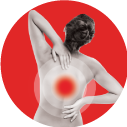
Tuberculosis, a scourge that goes back in time, afflicts and kills millions. This dreaded disease has been recorded as one of the oldest human afflictions, known to bye-pass human defenses and cause fatalities. An estimated 2 million people die each year on account of TB. Below we will discuss the symptoms, causes, treatments and types of tuberculosis.
What Causes Tuberculosis?
Tuberculosis (TB) is an airborne disease, and by common knowledge, caused by a bacteria called Mycobacterium Tuberculosis. This bacteria that causes TB is released in the air by an infected person through cough, sneeze, and droplets. On account of its communicability, it combines both the features of an infection and contagion. Therefore, separation and isolation of the affected person are the practiced options. It is known that the bacteria causing tuberculosis (TB), thrives in damp and dank places, while fresh air and sunshine destroy it.
What Are the Signs and Symptoms of Tuberculosis?
Though some common symptoms may suggest signs of tuberculosis (TB), on account of the variability of factors, it is difficult to diagnose or conclusively prove the presence of TB unless a proper TB test is conducted.
The obvious and reported symptoms of TB disease are coughing of blood, weakness, getting chills, night sweats, bad cough, persistent chest pain for three weeks or over, or diarrhea. Upon confirmation of such symptoms, tuberculosis (TB) gets defined as Active. Research indicates that TB which is lying dormant in millions of carriers may also be waiting to get active. TB symptoms and treatment is curable if met with an immediate response through a doctor’s consultation. Tuberculosis tests are the only reasonable answers to detect it.
What Are the Types of Tuberculosis (TB)?
Pulmonary tuberculosis characterized by blood through the lung is the most prevalent one. When not in this category, tuberculosis (TB) is addressed as extra pulmonary. Other manifestations are spinal TB causing spondylitis and back pain.TB invades the bones and has been known to cause skeletal deformities and while on a rampage can enter the central nervous system, leading to meningitis. TB is known to cause abdomen issues also.
Diabetes and Tuberculosis (TB)
Diabetics comes with a plethora of problems and Tuberculosis (TB) is one of them. Diabetics are more susceptible to contracting tuberculosis (TB) and also brings in its aftermath a host of problems, which may unmask its presence after the development of diabetes. Research evidences the interaction of TB and diabetes at various levels, causing impaired glucose levels. Insulin therapy, restricting morbidity and controlling glucotoxicity through a proper doctor “monitored” regimen is suggested.
While extensive research is a continuing process and a lot of questions about ‘what is Tuberculosis disease’ still seek resolution (in the treatment of TB), old age vulnerability and a geographical skew to the underdeveloped countries where the incidence of TB continues to be high, are truisms.
The article is based on the information available in public and which the author believes to be true. The author is not disseminating any information about the symptoms of TB disease, which the author believes or knows, is confidential or in conflict with the privacy of any person. The views expressed or information supplied through this article is mere opinion and observation of the author. The author does not intend to defame, insult or, cause loss or damage to anyone, in any manner, through this article.



























